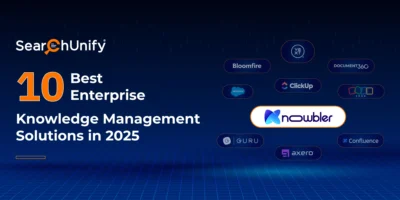
Gone are the days when keeping the customers happy was the sole purpose of contact centers. If prolonged success is what a brand desires, then it needs to ensure that the service representatives are content, productive, and well-informed.
Agent turnover has been one of the biggest challenges faced by organizations for decades. And yet, only a handful of enterprises have been able to overcome this hurdle and retain a majority of agents for the long haul.
When Agents Walk Away …
Customer service has been a high turnover industry for quite a long time. In fact, QATC revealed that the average turnover rate in the US is around 30-45%. According to the US Bureau of Labor Statistics, workers aged 20-34 stay with a call center for only about a year on average, compared to up to 2.7 years in other industries.
That kind of turnover means an unhappy state of affairs. No matter what sector you are in, how your business is killing it, or what a splendid job the rest of the departments are doing. Decreasing agent attrition should be taken seriously. Want to know why? Let me explain.
Let’s say that one of the top service mavens – we’ll call him Stan – has decided to part ways with your firm. Once Stan submits his resignation, you begin the process of finding a replacement for him.
However, what comes next is a series of interviews, daunting paperwork, and finally, onboarding followed with in-depth training to bring the new agent up to speed. When it’s done, you have spent thousands on human resources, time, and training efforts. And if things go south with the new hire, you’re back to square one.
The Cost of Agent Turnover
Now let’s take a look at the financial impact of turnover. A research published by Everest Group indicated that the estimated direct cost to replace a single support agent is between $3,100 and $5,100. Furthermore, due to the temporary drop in productivity, companies also lose revenue, which is estimated at an additional $2,000-$3,000 per lost employee.
Now, keeping in mind that 30-45% contact center employees leave every year, imagine the amount of money you stand at losing. If you don’t get it under control, you’ll be looking at a huge, recurring expenses eating into your bottom line every year.
Here are a few strategies that can help put that revenue leakage to check:
1. Analyze & Optimize Hiring Practices
You cannot have just anyone representing your firm’s service team, right? You need proactive agents who are engaged, calm, aligned with your mission, and ready to go the extra mile to keep customers happy. Agents that fit right in are an integral part of a lasting, successful team.
Goes without saying that having a thorough screening and interview process goes a long way in ensuring only the right people come aboard. I would also suggest looking beyond the resume and focussing on the candidate’s personality and people skills. People with the right mindset and perseverance are less likely to leave.
2. Use More Carrot, Less Stick
Hiring optimistic and upbeat candidates helps your team spring back after a rough day, but it is also necessary to check up on them regularly to see how they’re doing. It helps you to keep their morale up and offer positive reinforcement for all the work they’ve been doing.
A support representative’s job is tough and unpredictable; new challenges every day, heavy workload, facing pissed off (and at times abusive) customers. And if you crack a whip, you’ll end up aggravating already stressed agents. ‘We can replace you’ attitude will only push them away.
3. Put an End to Multitasking
Research has shown that juggling through tasks can lead to a staggering forty percent loss of productivity! And when you pair it with the fact that on an average an agent uses two screens and seven windows to help a single customer, errors arising out of lack of focus becomes a necessary evil.
To overcome this issue, you can provide them with an integrated CRM that helps them serve customers through a single interface eliminating the constant hopping and boosting productivity. In fact, let them specialize in one area. This will not only improve the quality of support but also help them stay focused.
4. Don’t Focus on Wrong Metrics
While it is important to closely monitor customer service metrics, you cannot afford to take your eyes off the ball. In other words, it is important to focus on improving your support function rather than simply looking at the productivity statistics.
For instance, if you reward agents for improving average handling (AHT), you’re basically promoting quantity over quality. While lower AHT means that the agent was fast, it doesn’t factor in whether the problem was resolved or not.
When you use first call resolution (FCR) or CSAT to measure agent performance instead of AHT, it’s a win-win situation. Your customers appreciate the understanding and supportive approach adopted by your team, and your agents will not have to worry about a ticking timebomb over their heads.
5. Equip Them with Powerful Tools
One of the biggest gripes support executives have is poorly integrated systems. Surprisingly, it is a prevalent issue in many contact centers. According to Calabrio:
- 60% of agents think their companies don’t provide the technology they need to help customers
- 44% of service reps say they don’t have the right tools to do their job effectively
If you want the support team to perform optimally, you need to provide the right tools or else they’ll feel disengaged. In fact, you can leverage core technologies like AI and machine learning to make their job a lot easier. Here are some of them and how they help:
- Cross-Channel Search: As mentioned earlier, support executives have to look all over your web properties to help a customer. This not only slows down the process but also infuriates your service agents. A cognitive search engine creates a unified knowledge pool that agents can use to instantly find relevant information across all KBs.
- Chatbots: With chatbots on your service frontline, your agents only have to take up more complex cases as most of the mundane L1 issues are automatically taken care of. Because of the reduced caseload, agents get more time to help customers which also drives CSAT.
- Auto Knowbler: Everybody knows how useful KCS can be but implementing is a different challenge altogether. Luckily, AI can help automate the KCS building process. As an agent resolves a new issue, AI analyzes the interaction to auto-populate a knowledge article on a predefined template. Once approved, it is added to your KB which again helps agents to seamlessly resolve cases.
- TAT Booster: Quickly sending out that first response is crucial, irrespective of the service channel. Well, what if you give your agents an agent of their own? Something that leverages machine learning to quickly analyze similar cases related to a new ticket to quickly suggest a fitting response? That will definitely reduce stress on your agents.
6. Train Them Continuously
Contact centers usually provide training to new agents that walks them through the expectations, procedures, policies, etc. and that’s about it. Needless to stay that shouldn’t stop. Service representatives need to be trained regularly for continual upskilling. Furthermore, business goals and customer needs are constantly changing and agents need to remain informed to deliver better performance results.
7. Acknowledge Success
Another thing that is often ignored but is important nonetheless is recognizing agents for the efforts they put in and celebrating their success. By recognizing their hard work, you show their role is valued in the firm and they are an integral part of the team. When agents feel appreciated, they tend to work harder, stay satisfied & loyal, are open to new ideas, and keep looking for ways to improve their performance.
The Bottom Line
One last thing that I’d like to emphasize is that an agent’s job is not simple. With the influx of self-service portals and chatbots, many customers easily get the answers they’re looking for. So when they reach out to your support team, it’s usually because they have a complicated issue.
Goes without saying that such issues are taxing on service executives that handle them. So, whatever you can do to appreciate, motivate, and reenergize these heroes will definitely help to retain them for a longer duration.
Want to learn about some other techniques to upskill your service champs and improve contact center quality? Then this comprehensive ebook is meant for you.














